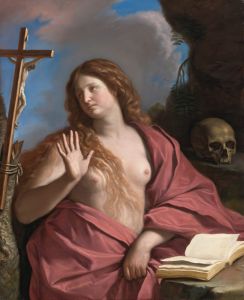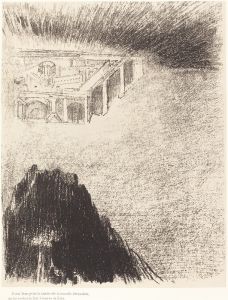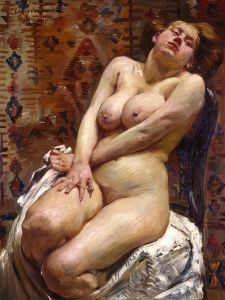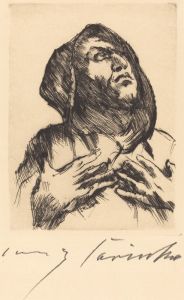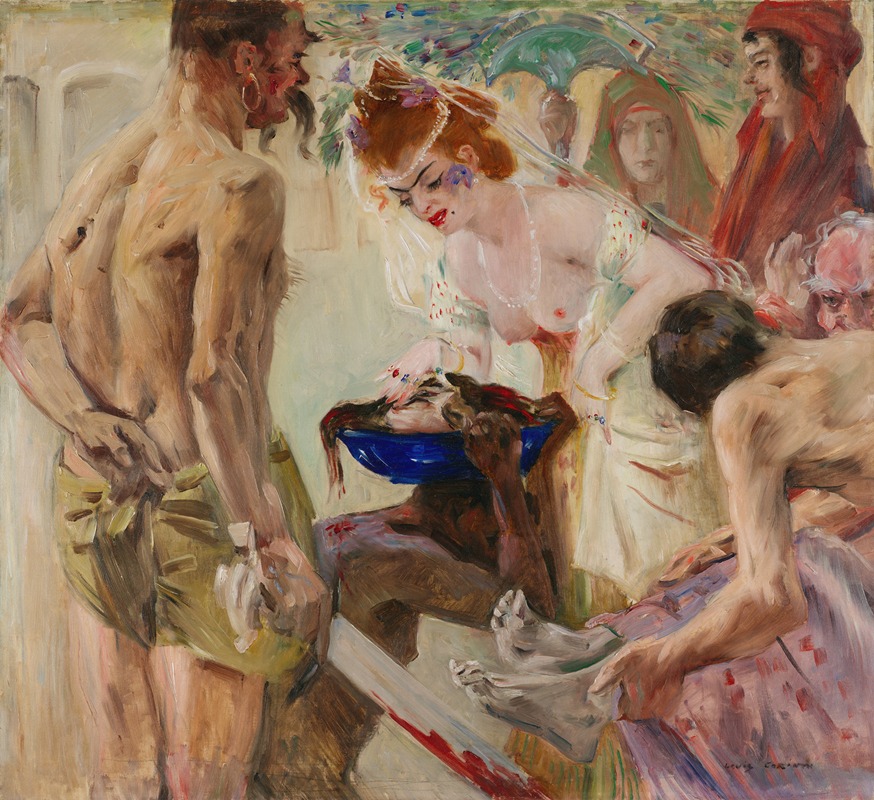
Salomé
A hand-painted replica of Lovis Corinth’s masterpiece Salomé, meticulously crafted by professional artists to capture the true essence of the original. Each piece is created with museum-quality canvas and rare mineral pigments, carefully painted by experienced artists with delicate brushstrokes and rich, layered colors to perfectly recreate the texture of the original artwork. Unlike machine-printed reproductions, this hand-painted version brings the painting to life, infused with the artist’s emotions and skill in every stroke. Whether for personal collection or home decoration, it instantly elevates the artistic atmosphere of any space.
"Salomé" is a painting created by the German artist Lovis Corinth in 1900. Lovis Corinth was a prominent figure in the German art scene during the late 19th and early 20th centuries, known for his contributions to the German Impressionist movement and later to the Expressionist movement. The painting "Salomé" is one of his notable works, reflecting his distinctive style and thematic interests.
The subject of the painting, Salomé, is a biblical figure known from the New Testament. She is often associated with the story of the beheading of John the Baptist. According to the biblical narrative, Salomé, the daughter of Herodias, performed a dance that so pleased her stepfather, King Herod, that he promised to grant her any wish. At her mother's behest, Salomé requested the head of John the Baptist on a platter. This story has been a popular subject in art, literature, and music, symbolizing themes of seduction, power, and revenge.
Corinth's depiction of Salomé is striking and dramatic. The painting captures the moment after the beheading, with Salomé holding the severed head of John the Baptist. The composition is intense, with a strong focus on the emotional and psychological aspects of the scene. Corinth's use of color and brushwork adds to the dramatic effect, creating a sense of movement and tension.
In "Salomé," Corinth employs a vivid palette and expressive brushstrokes, characteristic of his mature style. The painting is marked by its bold use of color and dynamic composition, which convey the emotional intensity of the scene. Salomé's figure is rendered with a sense of both allure and menace, reflecting the dual nature of her character as both a seductress and an instrument of vengeance.
The painting is also notable for its psychological depth. Corinth captures the complex emotions of Salomé, who appears both triumphant and contemplative. The severed head of John the Baptist, with its lifeless expression, contrasts sharply with Salomé's vibrant presence, highlighting the themes of life and death, innocence and guilt.
"Salomé" by Lovis Corinth is housed in the Kunsthalle Mannheim, a major art museum in Mannheim, Germany. The museum's collection includes a wide range of works from the 19th and 20th centuries, and Corinth's "Salomé" is one of its highlights. The painting is an important example of Corinth's work and a significant piece in the context of German art history.
Lovis Corinth's "Salomé" remains a powerful and evocative work, reflecting the artist's skill in capturing complex emotional and psychological states. The painting continues to be studied and admired for its artistic and historical significance, offering insights into the themes and techniques that defined Corinth's oeuvre.






